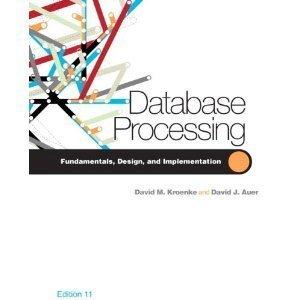Question
GaussQuad function: function I = GaussQuad(f,a,b,n) % GaussQuad: gauss quadrature integration % I=GaussQuad(f,a,b,n) % Input: % f = name of function to be integrated %
 GaussQuad function:
GaussQuad function:
function I = GaussQuad(f,a,b,n)
% GaussQuad: gauss quadrature integration
% I=GaussQuad(f,a,b,n)
% Input:
% f = name of function to be integrated
% a, b = integration limits
% n = number of quad points (default=8)
% Other Variables:
% xd = Gauss points to evaluate
% w = Weight factors
% x = True position of evaluation
% Output:
% I = Integral estimate
if nargin
if ~(b>a), error('Upper bound must be greater than lower'), end
if nargin
[xd,w]=GLTable(n);
I = 0;
c1 = (b+a)/2;
c2 = (b-a)/2;
for i = 1:n
x = c1 + c2 * xd(i);
I = I + f(x) * w(i);
end
I = I * c2;
end
function [x,w] = GLTable(n)
% GLTable Nodes and weights for Gauss-Legendre quadrature of order n
%
% Synopsis: [x,w] = GLTable(n)
%
% Input: n = number of nodes in quadrature rule, maximum: n = 8
%
% Output: x = vector of nodes
% w = vector of weights
% Numerical values from "Handbook of Mathematical Functions",
% Abramowitz and Stegun, eds., 1965 Dover (reprint), Table 25.4, p. 916
nn = fix(n); % Make sure number of nodes is an integer
x = zeros(nn,1); w = x; % Preallocate x and w vectors
switch nn
case 1
x = 0; w = 2;
case 2
x(1) = -1/sqrt(3); x(2) = -x(1);
w(1) = 1; w(2) = w(1);
case 3
x(1) = -sqrt(3/5); x(2) = 0; x(3) = -x(1);
w(1) = 5/9; w(2) = 8/9; w(3) = w(1);
case 4
x(1) = -0.861136311594053; x(4) = -x(1);
x(2) = -0.339981043584856; x(3) = -x(2);
w(1) = 0.347854845137454; w(4) = w(1);
w(2) = 0.652145154862546; w(3) = w(2);
case 5
x(1) = -0.906179845938664; x(5) = -x(1);
x(2) = -0.538469310105683; x(4) = -x(2);
x(3) = 0;
w(1) = 0.236926885056189; w(5) = w(1);
w(2) = 0.478628670499366; w(4) = w(2);
w(3) = 0.568888888888889;
case 6
x(1) = -0.932469514203152; x(6) = -x(1);
x(2) = -0.661209386466265; x(5) = -x(2);
x(3) = -0.238619186083197; x(4) = -x(3);
w(1) = 0.171324492379170; w(6) = w(1);
w(2) = 0.360761573048139; w(5) = w(2);
w(3) = 0.467913934572691; w(4) = w(3);
case 7
x(1) = -0.949107912342759; x(7) = -x(1);
x(2) = -0.741531185599394; x(6) = -x(2);
x(3) = -0.405845151377397; x(5) = -x(3);
x(4) = 0;
w(1) = 0.129484966168870; w(7) = w(1);
w(2) = 0.279705391489277; w(6) = w(2);
w(3) = 0.381830050505119; w(5) = w(3);
w(4) = 0.417959183673469;
case 8
x(1) = -0.960289856497536; x(8) = -x(1);
x(2) = -0.796666477413627; x(7) = -x(2);
x(3) = -0.525532409916329; x(6) = -x(3);
x(4) = -0.183434642495650; x(5) = -x(4);
w(1) = 0.101228536290376; w(8) = w(1);
w(2) = 0.222381034453374; w(7) = w(2);
w(3) = 0.313706645877887; w(6) = w(3);
w(4) = 0.362683783378362; w(5) = w(4);
otherwise
error(sprintf('Gauss quadrature with %d nodes not supported',nn));
end
end
Jsing Matlab Consider the following function over the interval from 0 to 1 f(x) 10r6+400r5 - 900x675x3 - 200x2 + 25x +0.2 (a) Use the three point Gauss-Legendre method to calculate the integral of the following function. Show all of the steps in the method. Do not use the GaussQuad function or the built-in integration functions. Use an appropriate fprintf statement to print the result with 10 digits after the decimal point. (b) Check your answer using the GaussQuad function. Use an appropriate fprintf statement to print the result with 10 digits after the decimal point. Jsing Matlab Consider the following function over the interval from 0 to 1 f(x) 10r6+400r5 - 900x675x3 - 200x2 + 25x +0.2 (a) Use the three point Gauss-Legendre method to calculate the integral of the following function. Show all of the steps in the method. Do not use the GaussQuad function or the built-in integration functions. Use an appropriate fprintf statement to print the result with 10 digits after the decimal point. (b) Check your answer using the GaussQuad function. Use an appropriate fprintf statement to print the result with 10 digits after the decimal point
Step by Step Solution
There are 3 Steps involved in it
Step: 1

Get Instant Access to Expert-Tailored Solutions
See step-by-step solutions with expert insights and AI powered tools for academic success
Step: 2

Step: 3

Ace Your Homework with AI
Get the answers you need in no time with our AI-driven, step-by-step assistance
Get Started


